Yamashiro region, Kyoto prefecture : English

トップページ > Home > Things To Do > Temple and Shrine
Main content starts here.
Visit
Temple and Shrine
Ikkyu - ji Temple (Shuon-an)(Kyotanabe City)
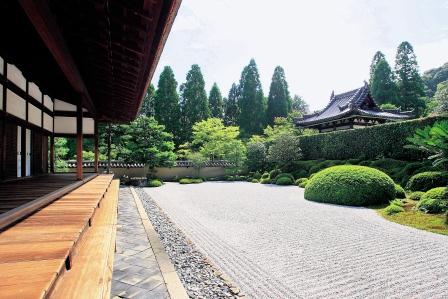
Ikkyu is known as the "quick-witted" priest. The Zen priest Ikkyu restored Ikkyu - ji Temple when he was 63 years old. He became the chief priest of Daitoku - ji Temple at the age of 81 - but lived at this temple, traveling back and forth between Ikkyu - ji Temple and Daitoku - ji Temple. Beyond the main gate is the stone-paved approach to the temple. Also at this temple are Hojo Garden, designated as a place of scenic beauty, and the main temple, designated as an Important Cultural Property. The recommended item to take home from this temple is the Ikkyu - ji Temple Natto (fermented soybeans), made by generations of chief priests. Reservations can be made to experience the Shojin-ryori (Buddhist vegetarian cuisine), while viewing the flowers of the four seasons.
| Address | 102 Makisatonouchi, Kyotanabe City |
| Telephone |
0774-62-0193 |
| Open | 9:30am - 5:00pm (9:30am - 4:30pm for Treasure House) |
| Access | Keihan Uji Kotsu bus to "Ikkyuji-do" |
| Fee | 500 yen |
Mimuroto-ji Temple(Uji City)
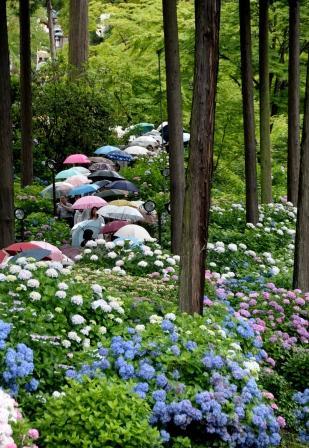
The Mimurotoji Temple is known for its large hydrangea garden. Visitors enjoy the outstanding beauty of many different types of hydrangeas blooming in June.
| Address | 21 Shigatani, Todo, Uji city |
| Telephone | 0774-21-2067 |
| Open | 8:30a.m.-4:30p.m.(until 4:00p.m. from Nov to Mar) |
| Closed | From December 29th to 31st |
| Access | Keihan Line to "Mimurodo" |
| Fee | 500 yen |
Joruri - ji Temple(Kizugawa City)
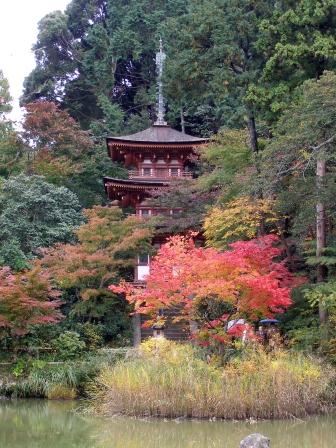
Joruriji Temple is also called Kutaiji (Temple of the Nine Images), for the nine images of the Amida Buddha housed in the oblong main hall. Popular among the Heian Period aristocracy, many images comprising nine Buddhas were produced back then. However, these are the only ones that remain. This important structure, with a Jodo-style garden from the Heian Period, has a peaceful and ordered atmosphere. The three-tiered pagoda rising above a dense forest as if piercing the sky, and the elegant scenery of Aji-ike Pond reflecting off the main hall, provide people of the modern age with a look at Fujiwara Culture.
| Address | 40 Fudaba, Nishio, Kamo-cho, Kizugawa-shi, Kyoto |
| Telephone | 0774-76-2390 |
| Open | 9:00am - 5:00pm(10:00am - 4:00pm from December to February) |
| Access | Kintetsu Line or JR Nara Line to "Nara", then 28 min bus ride |
| Fee | Garden Entrance Fee: Free Hall Entrance Fee: 300 yen |
Muko-jinja Shrine(Muko City)
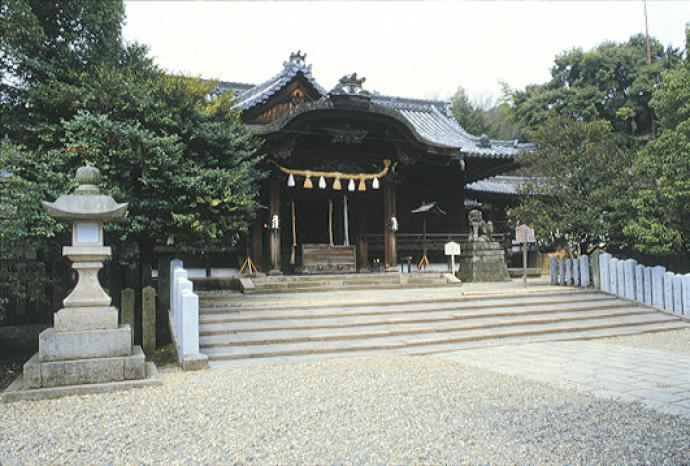
Said to have been established in 718 during the Nara Period. The main hall's triple nagare-zukuri style roof feature is designated as an important cultural property.
The path to the shrine is a tunnel of cherry blossoms in spring and maple leaves in autumn.
| Address | Muko-shi, Muko-cho, Kitayama 65 |
| Access | 5 minute walk from Nishi Muko Station on Hankyu Kyoto line. |
Nagaoka Tenman-gu Shrine(Nagaokakyo City)
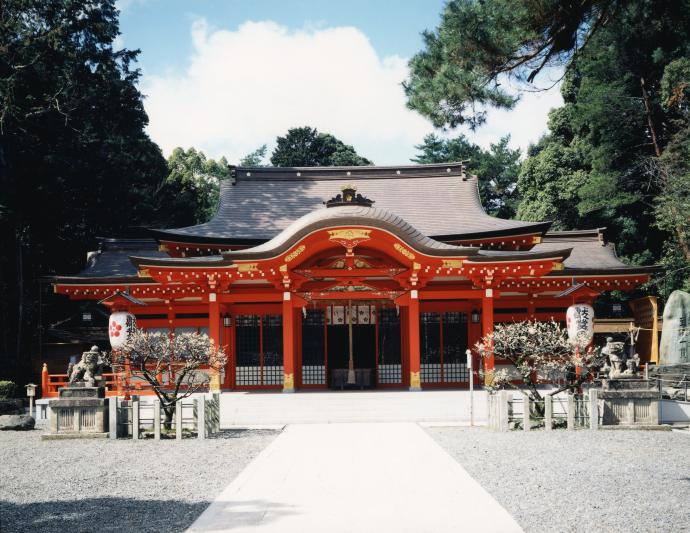 Known as the place home to a relic of when the enshrined Sugawara no Michizane was relegated to the title of Dazaifu. In the east of the shrine complex is the Hachijo-ike pond, where 150 year old chrysanthemums bloom at the end of April, and the shrine is a place where visitors can really feel at one with the passing of the seasons.
Known as the place home to a relic of when the enshrined Sugawara no Michizane was relegated to the title of Dazaifu. In the east of the shrine complex is the Hachijo-ike pond, where 150 year old chrysanthemums bloom at the end of April, and the shrine is a place where visitors can really feel at one with the passing of the seasons.
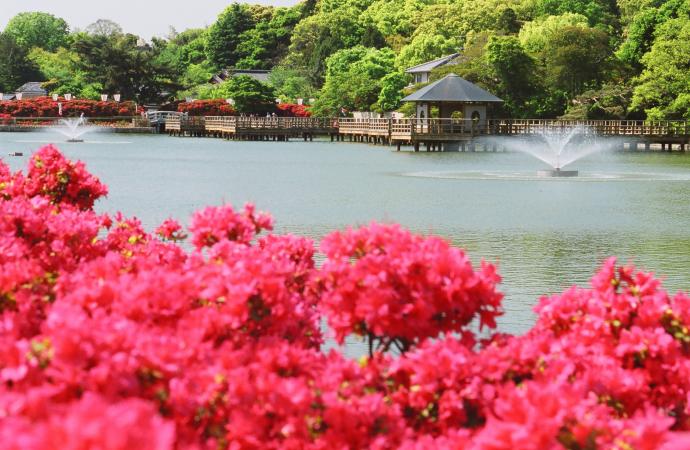
Komyo-ji Temple(Nagaokakyo City)
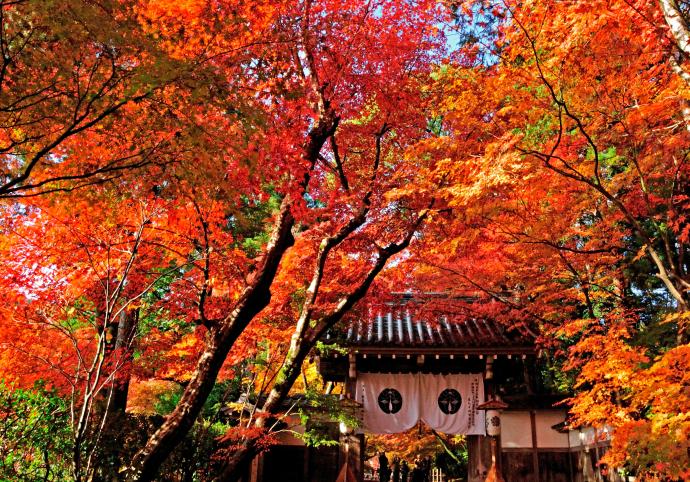
Head temple of the Seizan branch of Jodo-shu Buddhism.
Known as a famous spot to view the colours of the autumn leaves, and comes alive in late November with crowds during the autumn season. The maple trees lining the path through the temple create a beautiful coloured brocade, while the falling maple leaves at the end of autumn create a spectacular carpet of leaves. The maple trees are also worth a view in summer.
Yanagidani Kannon Yokoku-ji Temple(Nagaokakyo City)
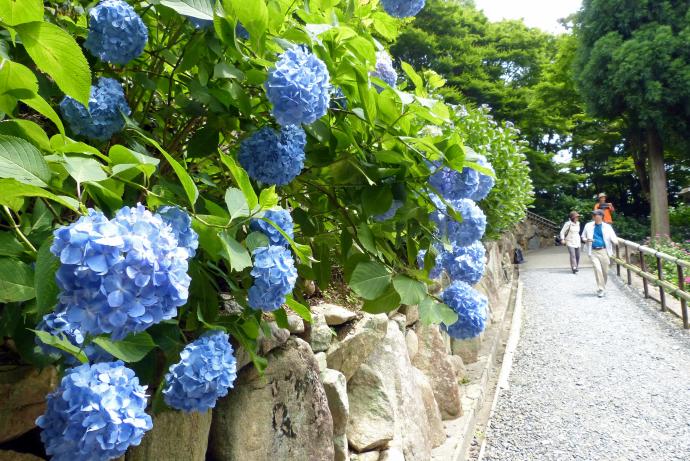
Located within the temple grounds is the spring which the priest Kukai made appear, and whose water is known to help cure eye conditions. In late June, around 4500 flowers of around 40 types of hydrangea decorate the quiet mountainsides. In the garden there a designated and renowned "Hydrangea Path" .
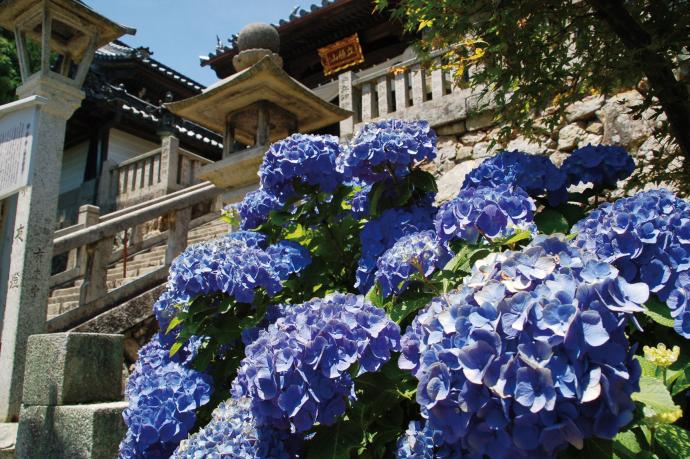
Otokuni-dera Temple(Nagaokakyo City)
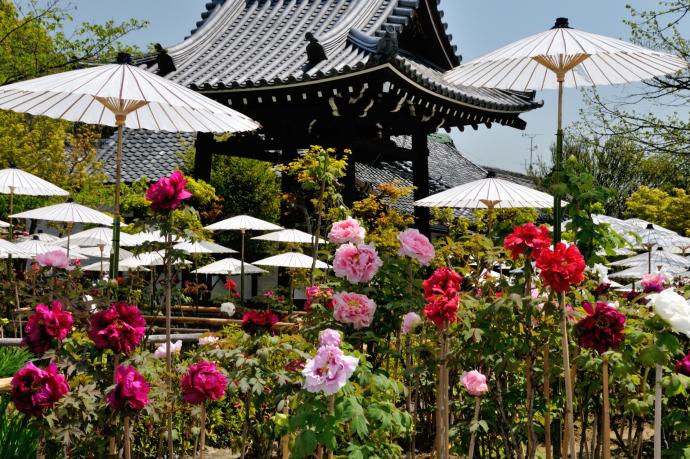 This is the oldest surviving temple in the region, and is said to have been established by Prince Shotoku. This area, related to the priest Kukai, is steeped in history
This is the oldest surviving temple in the region, and is said to have been established by Prince Shotoku. This area, related to the priest Kukai, is steeped in history